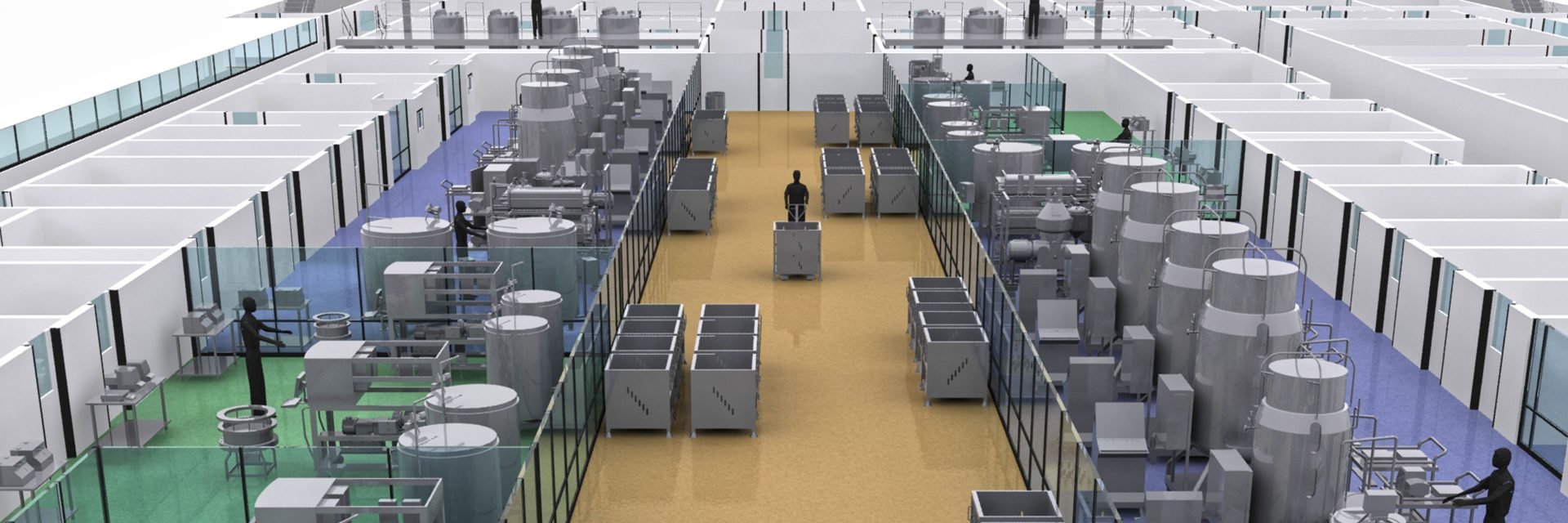
In the past 5 years, the biopharmaceutical industry has seen unprecedented change. Precipitated by the need to support a global client base with products that are more targeted, efficacious and cost-effective, the challenge to have a robust manufacturing supply chain is more crucial than ever to a company’s survival.
The industry has responded to this challenge with a plethora of new processing technologies, design approaches, and construction methodologies: closed/continuous processing, single-use systems, ballroom manufacturing, modular/‘podular’ construction and prefabrication, to name a few. Even for the savviest drug manufacturer, the number of options and opportunities for capital investment to support new business demands can seem daunting.
That is why thoughtfully crafting today’s biopharmaceutical manufacturing strategy requires a strong understanding of not only capital projects, but also what drives the industry. A manufacturing supply chain that is flexible, easy to modify or expand, and adaptable to new products or changes in process platforms will be critical to allowing companies to focus their investments in developing robust facilities while simultaneously reducing complexity, risk and cost of goods.
Manufacturing supply chain considerations
In order to ensure that the execution, approach and utilization of technologies are appropriate, there are a number of key drivers that should be evaluated prior to developing the right solution to any biopharma capital investment.
Geography/facility location
Securing available infrastructure and a competent building team is the first step in determining a company’s initial capital investment and risk. The biopharmaceutical plant built in Boston (MA), Arecibo (PR) or Bangladesh (India) will all have a different pool of local talent with varying expertise and capabilities to not only deliver a facility but also to provide maintenance and required ongoing service. Even a clean room pod dropped into place will eventually require future maintenance wherever it is.
Governing regulatory agencies
While the industry is moving towards more harmonized regulations, codes and standards still vary across governing agencies, while further nuances exist in the level of education and sophistication of inspectors. A biopharmaceutical manufacturing facility design must comply with both the regulatory requirements of its current market and the market it wants to support down the road to avoid any conflicts that could challenge a project’s completion, while also keeping options open for future business opportunities.
Process scale/manufacturing platform
Because there are many different ways to meet a certain annual production output, the parameters of the biopharmaceutical facility’s manufacturing process and how that will support current and future market demands will determine the scale and size of the facility and which technologies are optimum. For example, the facility that produces 20,000 liters/week of bulk drug substance will have substantially different building/infrastructure requirements whether it does so with two 10,000L SS bioreactors or ten 2000L single-use bioreactors (SUBs). Beyond scale, the extent of closed processing can allow for a significant reduction in HVAC requirements, validation and on-going operating costs.
Flexibility
In order to design and build a flexible biopharmaceutical plant, owners must ask themselves: What are the long-term business needs of the facility? What potential new processes or platforms will need to be accommodated? Is facility or production expansion or consolidation on the horizon? How does this facility fit into overall supply chain continuity? Organizing the facility right from the early stages of design will greatly benefit the company’s long-term goals and minimize future capital costs by keeping the facility as flexible as possible.
Cost of goods and initial capital investment
A combination of process and financial modeling tools can be employed to calculate the net present value and initial capital outlay for a facility, including long-term risk, based on today’s investment. These modeling tools can also be used to determine whether manufacturing cost-of-goods goals are met and how they could be impacted (positively or negatively) by other design decisions.
Schedule
How quickly does the facility need to start manufacturing product? Some facility designs may only require 12-18 months to be operational, while others may take 36-plus months. Fast track projects will look to leverage an existing facility or warehouse, ballroom manufacturing, high levels of disposable implementation, as well as risk-based commissioning/qualification methodologies to achieve their goals. Depending on certain key factors, prefabricated buildings or manufacturing pods may also be viable solutions. Being able to compress project schedules also allows manufacturers the opportunity to delay investment, allowing them to further scrutinize market data, or conversely, seize a market opportunity before their competition. And, of course, there are cost implications associated with schedule compression methodologies that are typically a driving factor.
Sustainability
While the manufacturing processes central to biopharmaceutical facilities can be energy-intensive, the goal should be to optimize facility operations whenever possible. Opportunities with HVAC systems design, optimum building orientation and materials, alternative heating and cooling sources, intelligent lighting systems, as well as specific water conservation techniques, make it possible to have a significant impact on the overall energy consumption of the facility, and in many cases, appropriate sustainability solutions pay for themselves in three to five years while continuing to lower manufacturing cost of goods.
From reimagining your existing manufacturing supply chain, building new facilities and even reconfiguring the spaces you currently work in, CRB designs biopharmaceutical plants based on a thorough understanding of the business processes and key considerations of our clients. Aiding our partners in making solid decisions that can reduce their bottom line ultimately allows owners and operators to focus on their real business goals: getting drugs to market faster and more cost-effectively.
